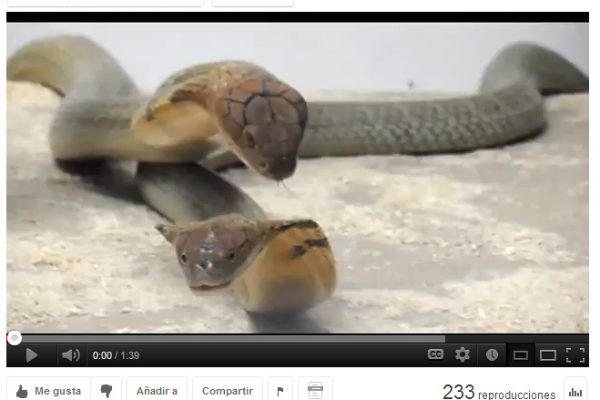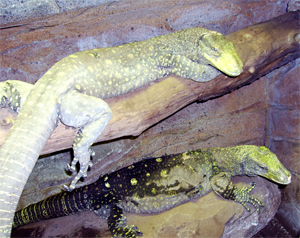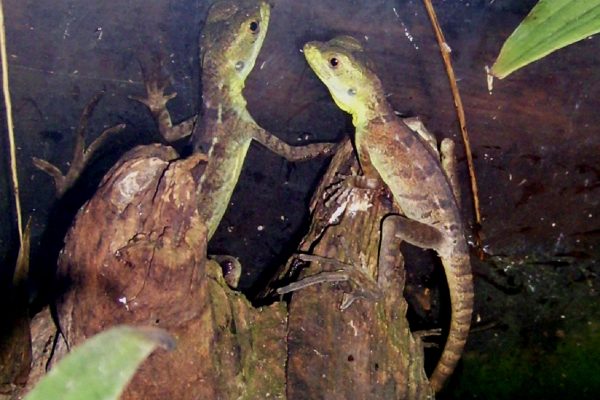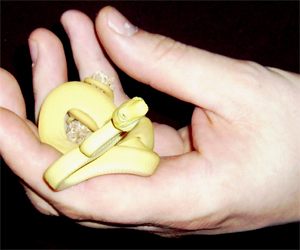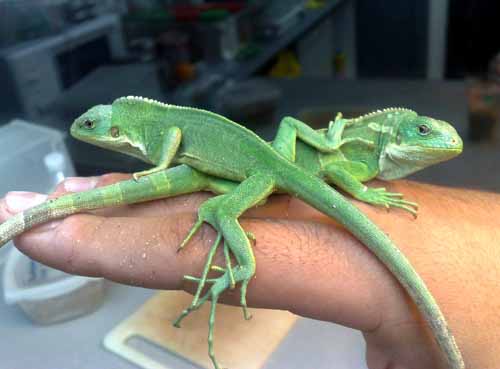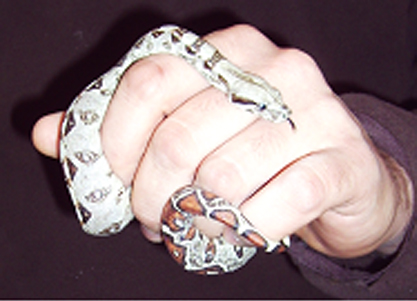Varanus salvadorii y Varanus prasinus, Varano Cocodrilo y Varano Esmeralda
Estas especies de varanos son poco frecuentes en cautividad, tanto es así que su reproducción es muy complicada. En el 2010 hemos conseguido su reproducción en nuestras instalaciones de Naturaleza Misteriosa del Zoo Aquarium de Madrid.
Cyclura cornuta , Iguana rinoceronte
Este saurio está incluido en el programa de protección CITES 1A. Su cría en cautividad es muy complicada, tanto es así que en Europa se ha conseguido su reproducción en muy contadas ocasiones.
Basiliscus plumifrons, Basilisco de doble cresta
Conocido como el lagarto Jesucristo por caminar por encima del agua. Originario de Centroamérica, la reproducción en cautividad de este lagarto es frecuente debido a su gran adaptación al terrario. En 2008 nuestro grupo establecido en las instalaciones del Zoo Aquarium de Madrid, conseguimos 18 crías.
Boa constrictor, Boa Constrictora Esta especie de boido es muy frecuente entre los aficionados a la terrarofilia, en el año 2008 conseguimos 27 crías de nuestra pareja reproductora ya asentada desde hace 10 años en nuestras instalaciones. Es la especie de boa más grande del mundo, alcanza su madurez sexual a partir de los 5 años de edad.
Bothriechis schlegelii, Crótalo de Pestañas
En nuestras instalaciones es habitual la cría de este crótalo de pestañas, contamos con una media de unas 15 crías por año, de nuestro grupo de reproductores, obteniendo crías de diversos colores así como verde, marrón , rosa , amarillo…
Brachylophus fasciatus, Iguana de las islas Fiji
Especie endémica de las Islas Fiji, amparada por el convenio CITES y protección 1A , su reproducción en cautividad solo se lleva a cabo en muy pocos centros europeos, así mismo nosotros hemos conseguido crías los últimos cuatro años, de varios reproductores que mantenemos en nuestras instalaciones.
Corallus hortulanus, Boa de jardín
Por primera vez conseguimos criar esta especie de boido, muy común en Centro y Sudamérica. El color de las crías puede variar desde el marrón hasta el amarillo, pasando por tonalidades rojizas y anaranjadas.

 en peligro de extinción,
en peligro de extinción,
